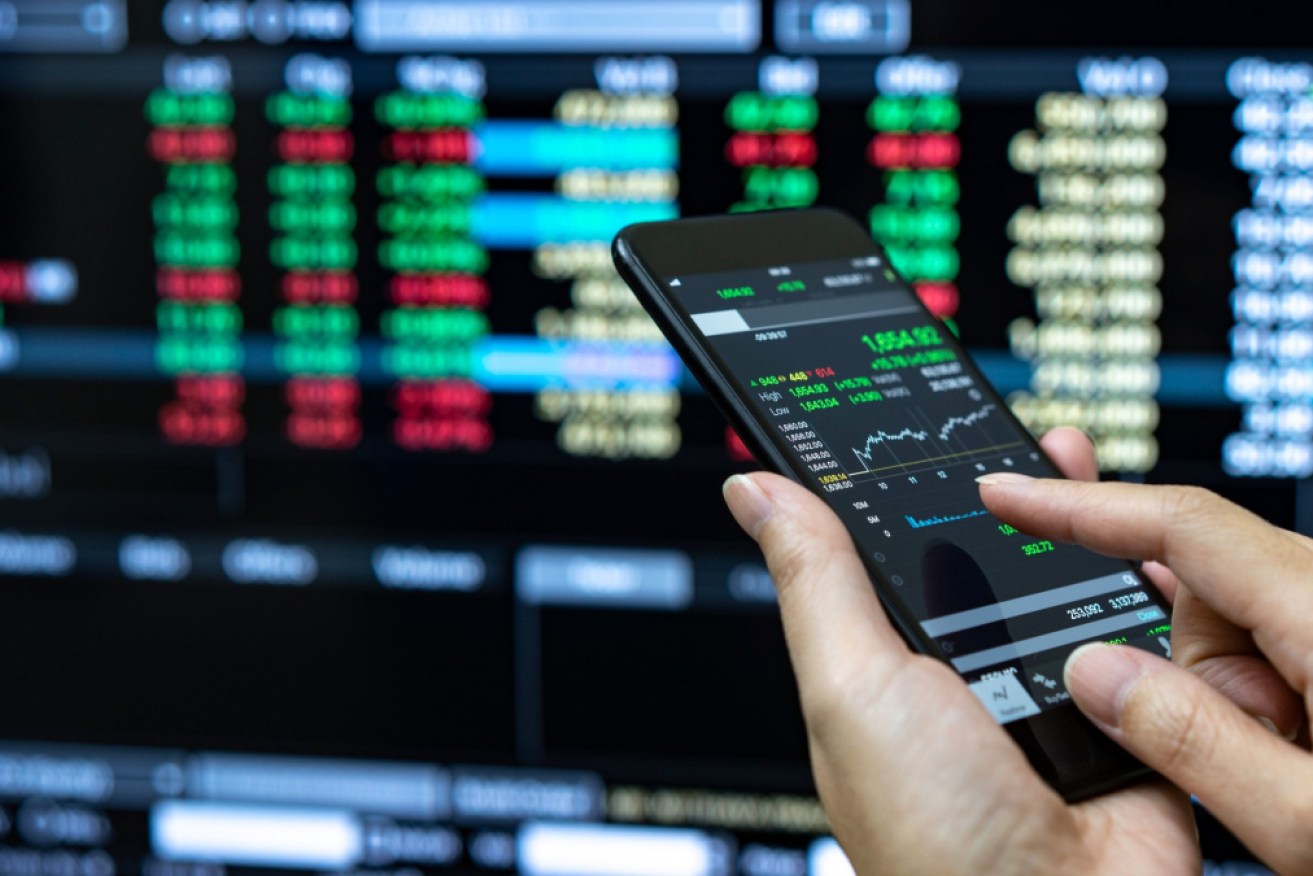Investors are buying stocks and gold to profit from the coronavirus


Mum and dad investors are rushing into stock markets despite their recent falls. Photo: Getty
Australians kept investing during the sharemarket panic in March, with turnover in exchange traded funds (ETFs) dealing in Australian equities topping $9 billion.
Financial research firm Rainmaker Information said that was more than three times the figures for January and February.
The turnover in ETF products centred on international equities, meanwhile, doubled to roughly $5 billion.
Overall, ETF products turned over $17.8 billion in March compared to $7.2 billion the previous month, but the value of all exchange traded funds declined by an average of 10 per cent to $57 billion.
ETFs are funds that invest in a large range of stocks, rather than single companies, and split up their holdings among many investors – allowing small investors in particular to get widely diversified exposures.
The high market turnovers showed “that there are people out there who are taking the current market falls as a buying opportunity,” said Alex Dunnin, executive director with Rainmaker.
Rainmaker’s statement reported “Australian equities were popular with net inflows of $1.2 billion, with the largest inflows going into market cap index products”.
Market cap index products weight their investments in individual stocks according to the size of companies – meaning they invest more money in companies with large market capitalisations. (This reflects the ‘swing to quality’ previously reported by The New Daily.)
And super funds are getting in on the action, too.
“Some super funds use exchange traded products to get their portfolios balanced before they research particular stocks to get that result,” Mr Dunnin said.
By buying ETFs when they see the market starting to move, super funds can increase their market exposures before they have chosen the particular stocks in which to invest.
As individual stocks are chosen, funds can sell their ETF holdings to maintain their chosen weightings for each type of portfolio.
Fixed-interest fears
“One would have expected fixed-interest products to be popular in this period, but the reported dislocation in fixed-interest markets seemed to have [had] an effect,” said Rainmaker investment chief John Dyall.
As a result of that negative news, investors sold out of fixed interest.
“Fixed interest had the highest net outflows, losing $770 million, a significant turnaround from the $488 million it gained in February,” Mr Dyall said.
Gold shines
Interestingly, investors were using ETFs to get liquidity and buy into physical gold as well as stocks.
Rainmaker found the single product with the largest net outflows was the Australian High Interest Cash Fund, which lost $257 million or 13 per cent of funds under management.

The gold buyers are active. Source: Getty
On the other hand the largest single inflow was to the ETFS Physical gold product, which experienced net inflows of $135 million as investors sought the yellow metal for safety.
When all types of investments were considered, ETFs experienced a positive inflow of $360 million.
However, that was only one-quarter of the $1.5 billion of net inflows during February.
Stock valuations are not low
BetaShares economist David Bassanese said sharemarket valuations had not fallen dramatically in absolute terms.
“Our market is priced at about 16.5 times earnings, which is not that low,” he said.
Price to earnings ratios peaked at 20.05 times at the end of December and fell to 18.59 in February.
Mr Bassanese said that markets would face earnings shocks, though, as the coronavirus continues to disrupt the world economy.
“Overall I expect earnings to fall 30 per cent this financial year, and Australian earnings are likely to be weaker that the US, as we don’t have companies like Google, Apple and Facebook which have held up through the falls.”
“In the best-case scenario, the market will find a top [in the current up trend] and trade sideways. There’s nothing to say it will have to go to new lows,” Mr Bassanese said.
Although earnings are likely to be hit by 30 per cent, Mr Bassanese said the recovery was likely to be short and sharp.
“We expect earnings to recover 20 per cent in 2021,” he said.
 Some superannuation funds face liquidity issues after the government allowed cash-strapped members to withdraw up to $20,000.
Some superannuation funds face liquidity issues after the government allowed cash-strapped members to withdraw up to $20,000.
Treasury expects the policy will cost funds $27 billion, but some super funds put that figure as high as $65 billion.
Balanced funds still strong
Although balanced super funds have fallen 10 to 12 per cent in value since the February peak, they still have $2.8 trillion under management, so $65 billion of fund withdrawals would only amount to around 2.5 per cent of assets.
“While you can’t use the overall figures to assess the liquidity issue, as far as we know, no fund has had a problem meeting withdrawals,” said Industry Super Australia chief economist Stephen Anthony.
The overall economy is weakening, but Dr Anthony said his assessment was more optimistic than that of the government.
“I think unemployment is likely to climb by 2 or 3 percentage points [to over 8 per cent] next financial year. Treasury is saying 10 per cent and some bank economists are going much higher than that,” Dr Anthony said.
“The thing to remember is that it’s a health system and real economy shock – and there is likely to be some balance returned in the near term.”
The New Daily is owned by Industry Super Holdings









